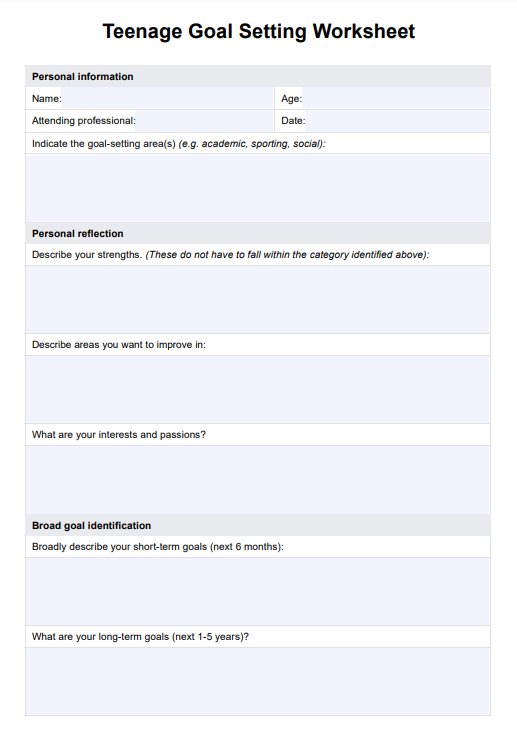These worksheets guide young people through broad personal reflection as identifying aspirations before narrowing in on the details of a specific goal. They are also formatted to ensure goals follow the SMART acronym criteria.

Teenage Goal Setting Worksheets
Implement effective goal-setting strategies for teenage clients with our comprehensive worksheet, a resource designed to foster personal growth and achievement.
Teenage Goal Setting Worksheets Template
Commonly asked questions
SMART goals align with the criteria set out on the SMART acronym; specific, measurable, achievable, relevant, and time-bound. This is a simple strategy to help your clients create focused and doable goals.
Effective goal setting is a powerful tool for teenagers. It helps them to navigate their formative years with a sense of purpose, prepares them for future challenges, and contributes significantly to their overall personal development.
EHR and practice management software
Get started for free
*No credit card required
Free
$0/usd
Unlimited clients
Telehealth
1GB of storage
Client portal text
Automated billing and online payments











